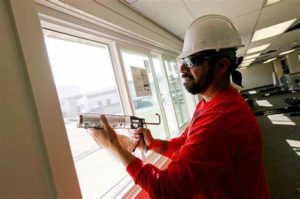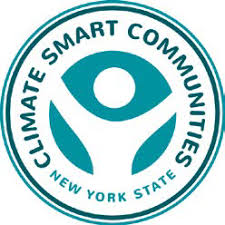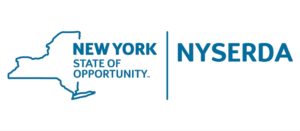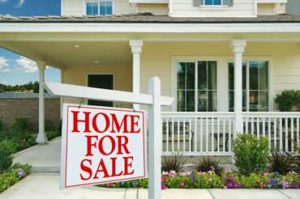Description
Energy efficiency in buildings means using less energy to heat and cool buildings and power lighting fixtures and electric appliances. Energy efficiency is the most cost-effective strategy for reducing energy use and should be done before other energy upgrades, like installing heat pumps or PV panels. The benefits of more efficient buildings include lower energy costs, more comfortable buildings, and decreased GHG emissions. Cost-effective energy-efficiency upgrades can reduce overall building energy use by more than 20% and electricity use in buildings in NY by more than 24%.
Heating and cooling account for 50-70% of the energy used in the average home, and about 20% is used for water heating. Everything else (lighting, appliances, etc.) make up 10-30%. Because heating and cooling consumes so much energy, insulating and sealing the building shell is often the first area to address for improved efficiency. An energy audit will identify the areas of buildings where energy loss is the greatest, typically in attics and crawl spaces, and floors over unconditioned spaces (basements). Different levels of insulation (or “R-values”) are recommended for different parts of the country, depending upon the climate. New York’s 2020 Energy Code requires attic/ceiling R-Values of 49 and R-values for walls of R-15 (with R-19 for basement walls). Before insulating it’s important to seal all the cracks to prevent leaks through a building’s outer walls, windows, doors and other openings.
Much of the building stock in the Capital Region is old and inefficient. Insulation was not mainstream building practice until the late 1970s and early 1980s, and even then these buildings were under-insulated. Implementation of Energy Star technologies could eliminate 30% of energy use in residential buildings, and use of the best available technology could eliminate 50%. Use of Energy Star technologies could reduce commercial building energy consumption by 21%, and using the best available technology energy, commercial energy use could be cut by 46%.
It is challenging for municipalities to improve the efficiency of building stock. Energy code requirements must be met only when a building is first built or is significantly renovated, leaving most buildings unimproved for many years. (Most buildings last at least 40 years, and many last more than a century.) There are a few paths available to municipalities.
Through education and outreach, municipalities can encourage existing building owners to get energy audits to identify opportunities for energy efficiency and calculate their household carbon footprint.
A more resolute path would make use of building performance ratings, such as the Home Energy Rating System (HERS) Index. This system uses a certified home energy rater to measure the energy performance of a building. A municipality could require a HERS rating at the time of sale, for example. Requirements could be phased in over time, such as initially only requiring that the HERS index be reported to the municipality for the purpose of creating a benchmark, and eventually requiring that buildings achieve a certain HERS index at the time of sale.
Although improving the efficiency of a house costs money, it pays for itself over time. For example, compliance with California’s 2019 Residential Building Energy Efficiency Standards has an initial cost of $9,500 and pays $19,000 in energy savings over a 30 year mortgage.

1
2
3
4
Implementation Phases
Encourage existing building owners to get energy audits to identify opportunities for energy efficiency and calculate their household carbon footprint.
Implement building scorecard/or HERS rating municipal requirements.
Require all MLS listings include HERS energy efficiency ratings/building scores.
Require existing buildings be brought up to code prior to sale.
Challenges
Requiring compliance with energy codes as a condition of sale of older homes will require either the seller or the buyer to pay for or finance home weatherization improvements. Home weatherization improvements can easily cost over $10,000 and have a payback period longer than 10 years. Therefore financing is needed, such as incorporating the work into a mortgage.
Requiring home listings/sales to include energy performance ratings would require the involvement of the real estate industry.
Example Municipalities
Several municipalities have already implemented this action…
- The Town of Bedford, NY requires HERS rating for existing building renovations of >75% of existing structure
- Seattle, Washington sends annual scorecards to its residents detailing their energy usage. These scorecards also detail improvements which can be made in order to improve efficiency.
Greenhouse Gas (GHG) Reductions
Data
Carbon emission by all the residential buildings in Bethlehem, NY :5800 Metric Ton CO2e [Bethlehem, NY 2010 Greenhouse Gas Emissions Inventory, Page 51-74, Table 1]
Energy saving when existing building switch to technologies known to be cost effective : 20% [Chapter 5 — Increasing Efficiency of Buildings Systems and Technologies]
Assumptions
Emission reduction is 20% for all existing residential units.
Methodology
We calculated the:
- Total CO2e reduction after improving energy efficiency in existing buildings.
Result
11600 Metric Tons of CO2e is reduced by improving the energy efficiency in existing residential buildings in Bethlehem, NY.
This results in LARGE GHG emissions reductions.

Climate Smart Communities (CSC) & Clean Energy Communities (CEC) Link
Both the CEC and CSC frameworks incentivize energy efficiency upgrades in municipal buildings, and campaigns to encourage energy efficiency upgrades in the wider community. Municipalities can:
CEC Actions:
- Earn 500 CEC points through CEC’s Clean Energy Upgrades action.
- Acess 200 CEC points and action grants through CEC’s Community Campaign for Clean Heating and Cooling and Energy Efficiency, for community outreach that encourages the adoption of energy efficiency measures.
CSC Actions:
- Earn 10 CSC points through CSC’s PE3 Action: Clean Energy Upgrades.
- Earn 3 CSC points through CSC’s PE8 Action: Community Campaign, for community outreach that encourages the adoption of energy efficiency measures.

Co-benefits
There are multiple co-benefits to completing this action, including:
- Increased attention to building efficiency benefits.
- Greater transparency in building operating costs.
- Accelerated investment in energy-efficiency upgrades.
- Economic savings to residents who implement energy-efficiency upgrades.
Resources
The US DOE has developed a Home Energy Score Rating system to evaluate the efficiency of home.
The United States Department of Energy illustrates energy efficient home design.
The City Energy Project website shows how to model building performance municipal ordinances and Seattle’s scorecard example.
The EPA’s carbon footprint calculator can help estimate a home’s GHG emissions.
The Department of State of the state of New York’s Uniform Code and Energy Code Update which became effective May 12, 2020.
There is nationwide support for increasing 2021 International Energy Codes energy codes by 10%:
City Energy Project (CEP) developed separate resource, the Creating A High-Impact Building Performance Policy: A Decision Framework For Local Governments , to provide guidance on developing a building performance policy.
The City of Philadelphia sends city building owners an energy score card annually.
https://www.energy.gov/downloads/chapter-5-increasing-efficiency-buildings-systems-and-technologies
https://www.energy.gov/sites/default/files/2017/06/f35/energy_efficiency_reso
urces_fact_sheet_june2017.pdf
www1.eere.energy.gov
https://www.energy.gov/sites/default/files/2017/03/f34/qtr-2015-chapter5.pdf
https://www.hersindex.com/
https://ww2.energy.ca.gov/title24/2019standards/documents/Title_24_2019_R
esidential_infographic.pdf
https://betterbuildingssolutioncenter.energy.gov/home-energy-score/home-energy-score-methodology
https://bedfordny.gov/wp-content/uploads/2019/11/Building-permit-application.pdf
https://www.ncrec.gov/Pdfs/bicar/GreenBuilding.pdf
https://www.energy.gov/energysaver/design/energy-efficient-home-design
https://www.cityenergyproject.org/resources/building-performance-policy-model-ordinance/
https://www.cityenergyproject.org/resources/seattle-sample-building-scorecard/
https://www.epa.gov/ghgemissions/household-carbon-footprint-calculator
www.dos.ny.gov
https://newbuildings.org/2021-energy-code-progress-challenged-climate-and-affordability-stand-to-lose-unless-we-speak-up/
https://www.cityenergyproject.org/resources/philadelphia-building-scorecard/
http://www.lodi.gov/DocumentCenter/View/2985/2019-California-Energy-Changes-PDF
https://www.energy.gov/energysaver/articles/how-much-can-you-really-save-energy-efficient-improvements



